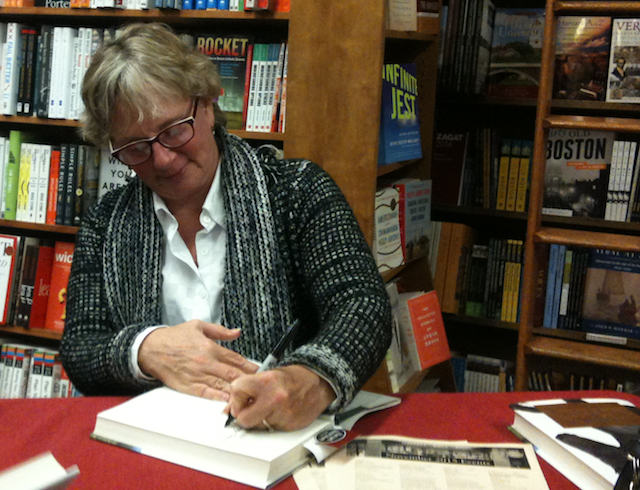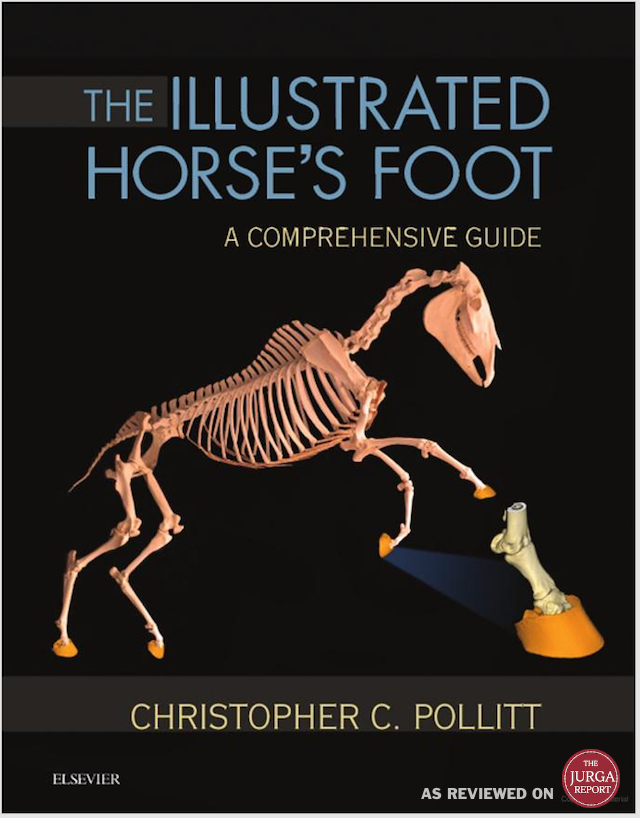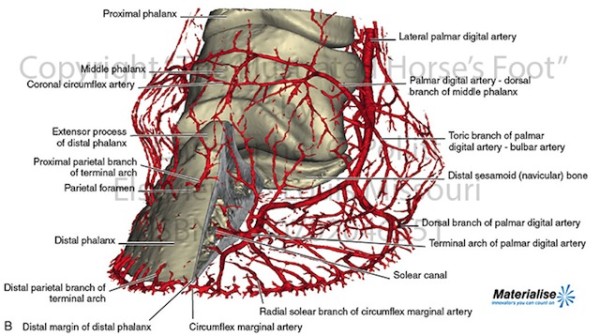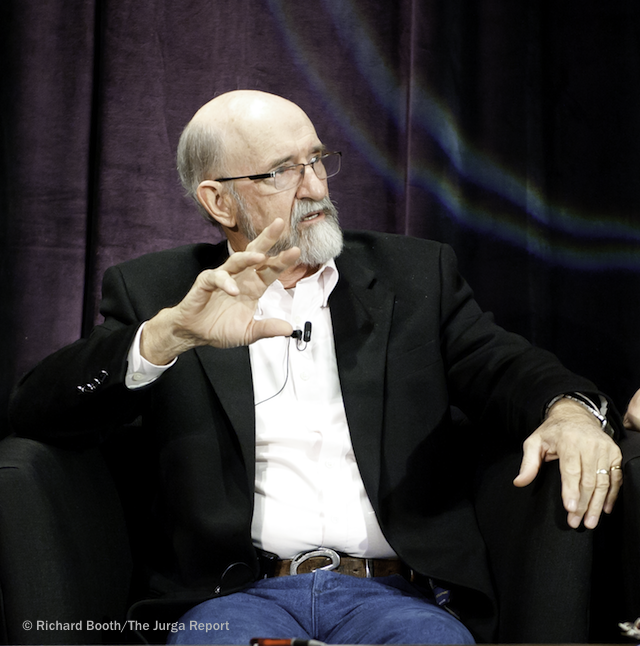Gift List: Books and Tech Tools for Happy Horse Health Holidays
- March 10, 2017
- ⎯ Fran Jurga

(This is part one of a two-part post)
What makes a great holiday gift? Perhaps it is watching the surprise and pleasure on the recipient’s face as the gift is unwrapped. Perhaps it is knowing that a gift will be used and appreciated. Perhaps it’s the fun of seeking out just the right thing for the right person. When all three of those things happen, it’s a very good gift.
For some people, a personal gift like a bracelet or a fragrance is the right choice. For others, a gift card or a concert ticket is sure to please and easy for you to purchase.
But for others, there’s the gift of education, of curiosity, of science and technology and knowing that there are things we can give this holiday season that were never available before, and that might open some closed little cabinets in our minds to new ideas.
So this list of gift ideas has no limits, and represents just a tip of an iceberg of what’s out there, if you look. It began after the inspiration of reading Wendy Williams’ new book, “The Horse: The Epic History of Our Noble Companion”. That book legitimizes the questions so many of us ask, and never really get answered. That book inspires more questions, and a renewed pledge to find out more about horses.
If there’s someone on your gift list who deserves the latest and the greatest, here’s your list. Don’t forget to buy some gifts for yourself, and to add to this list in The Jurga Report’s comment section!

This review is late. I started to review “The Horse: The Epic History of Our Noble Companion” a half dozen times in November, but it just never finished itself. Wendy Williams, in the meantime, was crisscrossing the country and speaking in museums, book shops and university lecture halls. I caught up with her in Harvard Square one night, and couldn’t quite believe what I heard.
Then I read the book.

In the past year, you and I will have read a dozen books, gone to a dozen lectures, visited 100 websites and searched Twitter and Facebook for endless distracted hours while we searched for answers to our questions about horses, their health and, especially, the horse-human bond. Why did a horse we owned ten years ago learn something so quickly that the horse we ride now just won’t–or can’t–master? What is the influence of history and culture and environment on the basic nature of an animal? Does a horse’s breed really predetermine–or even limit–its character and intelligence? Where are we on the road to better understanding our equine partners?
While we were doing all that searching, Wendy Williams was on a plane. Many planes, actually. She was headed to places like Spain, Vienna, Mongolia, Tanzania, Wyoming, the Canadian Maritimes. She was asking the same questions, but she was tracking down the world’s experts–scientists and horsemen and researchers in the field. And she came home with some very good answers.
“The Horse” is not an easy book to review because it has such a farflung agenda. It’s a travelogue not of glamourous horse spots but of hot spots of horse science. Yet it’s not a book about Mongolian Takhi horses or the Sable Island wild horses or the eons it took to complete the evolution/selective elimination of horses’ original multiple toes.
It’s about all those things, and it’s also about a woman’s first horse and what it meant to her. How did that bond endure long past the horse’s departure from her life? All the scientists in the world, strangely enough, wondered pretty much the same thing: how do horses affect us so powerfully, and what is it that sets them apart from other animals?

Wendy Williams is a science writer. She’s able to ask a question, formulate a theoretical answer, and assemble the evidence in a compelling way. But even she was surprised by what she found, at the twists and turns that her journey took not just on the world map, but in her own heart and mind.
Her book takes us on both an intellectual journey and an equine adventure. But you don’t need to pack a saddle or helmet. Instead, bring an open and curious mind. You’ll run into Pablo Picasso’s famous Guernica mural of war horses, the chalk-y Uffington white horse on an English hillside, Charles Darwin, Eadward Muybridge, and Galician cave art horses in Spain.
Each past and present individual in this book, whether horse or human, adds some facts and figures to the scientific evidence but Williams peppers the science with the perspective of not just an investigative reporter but an authentic horse lover and owner who feels the power, and–like all of us–simply wants to understand and find peace with what’s it’s really all about.
THE HORSE
The Epic History of Our Noble Companion
By Wendy Williams
Illustrated. 304 pp. Scientific American/Farrar, Straus & Giroux. $26.
Available in many bookshops, and chosen one of the top ten non-fiction books published in 2015 by the Wall Street Journal. Please buy from an independent bookseller, if you can.
Read what the Sunday New York Times Book Review had to say about “The Horse” on December 13, 2015.

The next gift suggestion is actually premature. The book won’t be officially published until tomorrow. But the hoof world has been waiting a decade (or more) for it, and if you have a vet or farrier on your list and price isn’t too much of an object, consider your shopping done.
Dr. Chris Pollitt’s The Illustrated Horse’s Foot: A comprehensive guide should have been an update of his sensational 1995 bestseller, The Color Atlas of the Horse’s Foot. That book has long been out of print and is rarely available at any price.

But Dr Pollitt, a world-recognized leader in laminitis research and horse hoof science from the University of Queensland in Australia, didn’t do what was expected. He only needed to add new photos and update the text, but instead he started anew and went even deeper into the horse’s foot.
The result is a book of in-depth knowledge on the anatomy of the normal horse’s foot illustrated by stunning color photographs and illustrations. Don’t think for a minute that this is dry stuff better suited for a veterinary science lab. Pollitt’s research has spanned both the globe and the spectrum of horse sport and environment, and is peppered with questions that he’d like the reader to contemplate.

This is a reference book, but readers should be prepared for some surprises, especially those who follow this professor’s research. Pollitt’s “normal” model is not one of the brumby wild horses he studied and filmed in the Australian Outback. It’s an unbroken three-year-old stock horse.
Likewise, Pollitt’s model for the growth and development of the foal’s foot isn’t a traditional timeline. Instead, it’s a palette of 16 time-lapse style photos illustrating the relative change in circumference between the ground surface of the hoof and the coronet above it over many months of growth.
The quality of the illustrations is far above the norm. Many of his illustrations were provided by the same illustrator who supplies art to Gray’s Anatomy and have a remarkable three-dimensional aspect, even on a two-dimensional paper page. Others will be familiar to those who have attended the author’s lectures, but most have been elaborated with supplemental labels or enhanced with color and cutaways.
The depth and dimension of Pollitt’s new book, however, is in the volume of microscopy images from his famous Australian Laminitis Research Unit. The suspensory apparatus of the distal phalanx (SADP), or hoof-laminar bond, has never been illustrated so extensively in one place. Nor has the foot itself, for that matter.
This book won’t tell you much about treating thrush or curing contracted heels. So often, in lectures, Pollitt will lament that he has been attempting to unravel the mystery of laminitis without the luxury of a knowledge base on the normal horse’s foot for comparison. Perhaps unconsciously, he has been working in parallel directions all these years.
As a result, The Illustrated Horse’s Foot begins at the beginning, inside the normal foot.
What took us so long to get back to the beginning? Finally, then, let’s get started: This book will be both the guide, for some, and the source, for all who have contemplated finding answers to Dr Pollitt’s thought-provoking questions about the workings of the equine foot.
The Illustrated Horse’s Foot A Comprehensive Guide by Christopher C. Pollitt, BVSc, PhD Hardcover, 320 Pages, 10 7/8 X 8 5/8 in; ISBN: 978-0-7020-4655-1 Price $180 Also available as an e-book. Purchase of the book entitles access to a private website with supplemental material.
Note: the book is available for a short time at a generous discount when purchased through the publisher, Elsevier.

Dr Allen Schoen likes to say that he is changing the world, one horse at a time. But the pioneering sensitive veterinarian’s new book, co-authored with holistic horse trainer Susan Gordon, suggests that it’s not the horses who need changing. We’re the ones who need to change.
And this book, The Compassionate Equestrian, is the roadmap they’ve drawn for us. The book oozes sincerity and dedication, asks readers to pledge their support by practicing 25 principles of compassion toward horses, and offers social media and web-based support and supplementation.
How does this book fit into the gift list of scientific and technical choices? Because it is the extension of equestrianism into the horse-human bond that is the last frontier of equine science. And because it will be an important book to anyone who receives it.
Perhaps this book is something you receive, and it’s a compliment when you receive it as a gift.
It’s possible that the book’s compelling title is also a bit of a handicap. Virtually everyone who loves a horse considers him- or herself a compassionate equestrian. It’s a given. Do they overlook the book on a store shelf because they think they’re already there?
This is Dr Schoen’s sixth book; his and Gordon’s 25 tenets of the Compassionate Equestrian creed might show that all of us have a way to go. Dr Schoen thinks that the neuroscience approach to understanding and practicing compassion is something that has been missing before this time in our common efforts to do what is best for our horses by trying to understand who and what they are, and why they behave and react as they do.
Cynics will say that you can’t brand compassion, but this seems to be what the plan is. Cynics won’t argue with the common sense attitude taken by the authors. I especially gravitated to the simplicity of the core idea introduced early on, that compassion requires a human to stop and change gears before approaching or handling a horse. But does your barn need to be a sanctuary in order to be compassionate? Many barns are active and buzzing. Does that make then non-compassionate?
Do we really need breathing exercises and meditations as well as awareness before interacting with horses? Will it mean something if a barn in your area qualifies to be awarded the Compassionate Barn designation? Should compassion competence be a prerequisite for other work with horses?
The Compassionate Equestrian strives to be much more than a book. It aspires to be a movement, a brand, and an identifiable behavior. But is someone less than compassionate for not meeting the brand’s requirement and signing the pledge? Is this the inevitable expansion of natural horsemanship into the behavior of humans as well as horses?
Read the book and decide where you, an assumed compassionate equestrian, fall in the scale of The Compassionate Equestrian’s sensibilities.
Decide for yourself if compassionate will be the new natural. Whatever you call it, horses sense, seek and respond to compassionate care and handling. We all see that every day. Now we have a book that explains it, from the point of view of a trainer and veterinarian. Perhaps each of us could have written this book, in a different way, but Schoen and Gordon offer a way to measure, and expand, our definitions of compassion toward horses.
The Compassionate Equestrian 25 Principles to Live by When Caring for and Working with Horses by Dr Allen Schoen and Susan Gordon Paperback; 422 Pages; $24.95; ISBN: 978-1-57076-715-9
(This gift list continues in Part 2)





